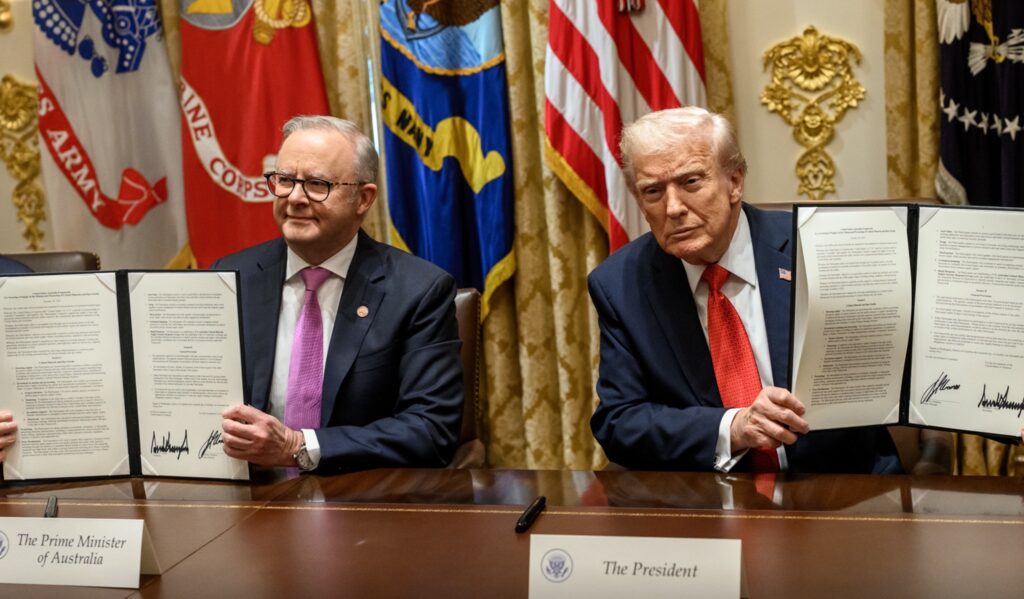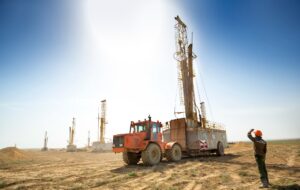Subscribe for Investment Insights. Stay Ahead.
Investment market and industry insights delivered to you in real-time.
- US and Australia agreed to provide at least US $1 billion each within six months for raw-and‐processed critical-minerals projects
- the joint framework explicitly targets mining, separation and processing of critical minerals and rare earths, not just raw extraction
- includes new mechanisms: price-floors, permitting streamlining, strategic asset-sale review, recycling mandates as part of securing supply chains
On 20 October 2025, Donald Trump and Anthony Albanese signed the United States–Australia Framework for Securing of Supply in the Mining and Processing of Critical Minerals and Rare Earths at the White House. The framework commits both countries to accelerate supply-chain resilience through coordinated investment and policy instruments.
- US and Australia to invest more than US$3 billion together in critical mineral projects in the next six months, with recoverable resources in the projects estimated to be worth $53 billion
- the Export-Import Bank of the United States is issuing seven Letters of Interest for more than US$2.2 billion in financing, unlocking up to $5 billion of total investment, to advance critical minerals and supply-chain security projects between our two countries
- the US Department of War will invest in the construction of a 100 metric ton-per-year advanced gallium refinery in Western Australia, further advancing self-reliance in critical minerals processing
“This is an $8.5 billion pipeline that we have ready to go” — Anthony Albanese, Australia Prime Minister
“We’re doing a real job on rare earth and many other things” — Donald Trump, US President
Under Section I of the agreement, the two governments pledged to mobilize government and private support via guarantees, loans or equity; jointly identify projects of interest; and provide at least US$1 billion in financing in each country within six months to projects expected to deliver end-products to US and Australian buyers.
The move is described by The White House as a model for global supply-chain cooperation, placing critical minerals and rare earths firmly in the national-security/infrastructure category.
Key policy instruments in the deal include:
- permitting acceleration: streamlining domestic regulatory approvals for mining, separation and processing
- price-mechanism guardrails: exploring price-floors and standards-based trading systems to protect domestic markets from unfair practices
- asset-sale controls: strengthening authorities to review or deter strategic sales of critical-minerals assets on national-security grounds
- recycling support and geological mapping: commitments to invest in mineral-scrap processing and map resource bases in both countries
Why it matters: strategic supply-chain pivot
China’s dominance remains the benchmark
China processes roughly 90% of rare-earth oxides and most finished magnets used in defence and high-tech manufacturing. With Beijing tightening rare earth export controls in 2025, the US-Australia pact is a direct response to a shifting risk-landscape.
From raw mining to processing-value capture
Historically, many Western players stopped at raw ore export. This framework makes clear the next phase is downstream: separation, refining, magnet-making and recycling. That shift expands the investor opportunity beyond traditional mining.
Policy tools join the cap-ex
This is not just about raising capital. The framework integrates regulatory reforms, strategic stockpiling (Australia’s reserve), and trade-defence tools. That signals critical minerals are now treated as infrastructure.
Key risks to monitor
- execution time-lag: projects take years to build; the window of risk remains high
- policy drift: the deal hinges on actual follow-through (financing, permitting, offtakes) not just signaling
- China’s counter-moves: Beijing may respond with further export controls or trade pressure, offsetting part of the benefit of diversification
- commodity price and cost risk: as new entrants emerge, margins may compress and high-cost producers may struggle
Conclusion
The US–Australia critical-minerals framework marks a structural realignment. It elevates rare earths from niche mining assets to strategic infrastructure. The pipeline is not just about new mines — it’s about processing, manufacturing and resilient allied supply-chain ecosystems.
The deal signals that critical minerals are now treated like defence assets. The real value likely comes with processing and manufacturing, not simply digging the ore out of the ground.
It’s part of a strategic pivot by Australia we highlighted back in 2023
Subscribe for Investment Insights. Stay Ahead.
Investment market and industry insights delivered to you in real-time.




















